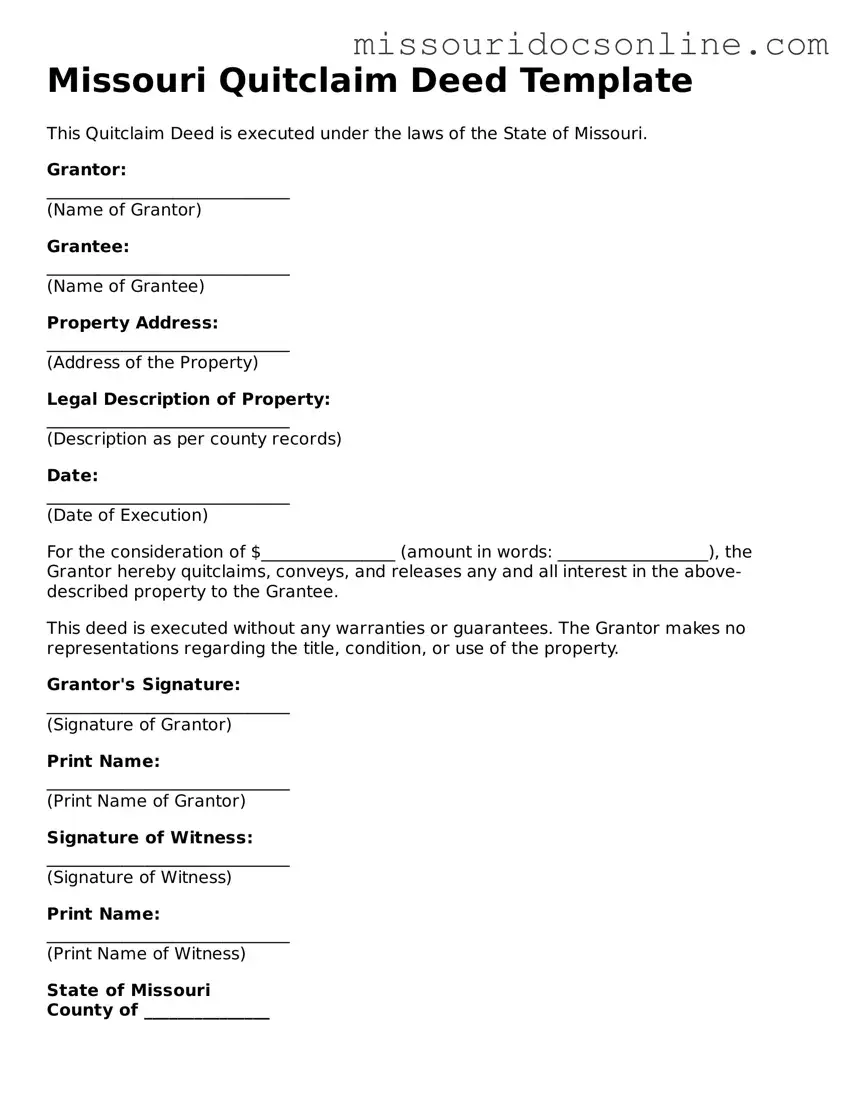Attorney-Approved Quitclaim Deed Form for Missouri State
A Missouri Quitclaim Deed is a legal document used to transfer ownership of real estate from one party to another without guaranteeing the property's title. This form is often utilized in situations where the seller may not have a clear title or when transferring property between family members. Understanding the Quitclaim Deed process is essential for ensuring a smooth transfer of property rights.
To get started with filling out the form, click the button below.
Access Quitclaim Deed Editor
